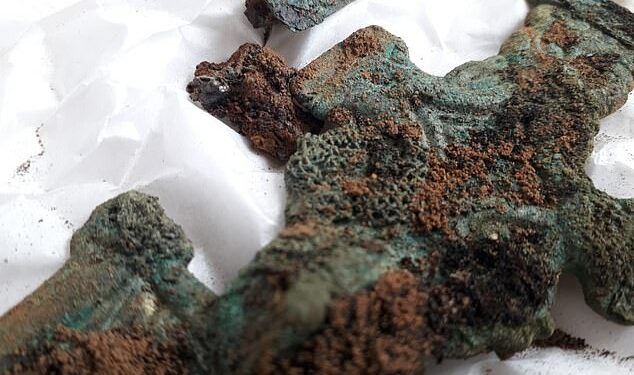Thousands of beads and brooches and swords, textiles, and other items have been discovered during excavations at a vast Anglo-Saxon graveyard in Northamptonshire.
The burial site at Overstone Gate was discovered by experts from the Museum of London Archaeology (MOLA) when the 15-hectare land was being prepared for building.
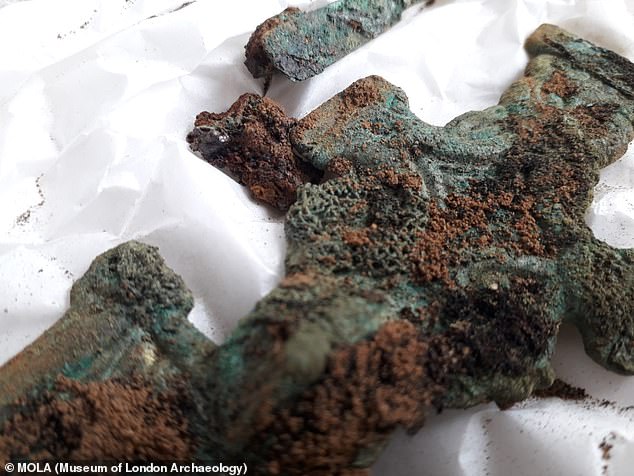
Over a year, the crew discovered 154 Anglo-Saxon burials, holding roughly 3,000 valued things the deceased brought to their final resting place.
Around 2,000 unique beads, 150 brooches, 75 wrist clasps, 15 rings, and 15 chatelaines — a form of the ornate clasp from which chains often dangle — were included.
Cosmetic kits, bone combs, and weaponry such as 40 knives, 25 spears, and 15 shield bosses were also discovered.

together containing nearly 3,000 treasured objects the buried took to their resting place
Also uncovered at the Overstone Gate site were three round barrows (one of which is pictured)
and four buildings from the Bronze Age, along with 46 prehistoric burials
The scientists even discovered surviving cloth fragments — which generally do not survive to be recorded in the archaeological record — alongside metal artifacts.
The excavation uncovered an Anglo-Saxon hamlet of 22 houses, with another 20 of the same period scattered across the site.
Three round barrows and four Bronze Age houses were also discovered as 46 ancient graves.
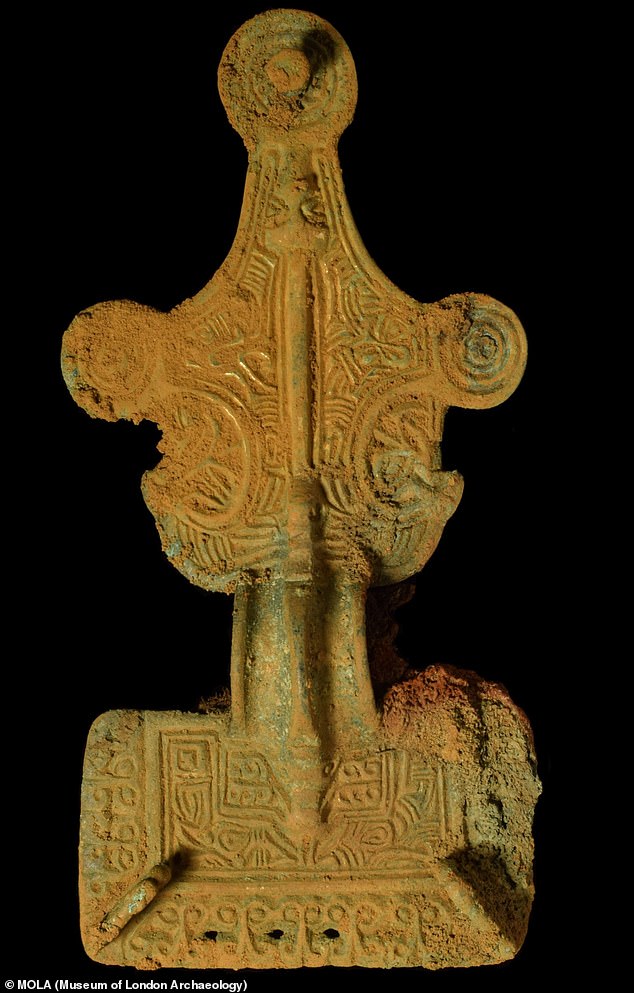
75 wrist clasps, 15 rings and 15 chatelaines — a type of decorative clasp
‘The largest Anglo-Saxon graveyard ever discovered in Northamptonshire is at Overstone Leys,’ said MOLA project manager Simon Markus.
‘It’s unusual to find an Anglo-Saxon village and a cemetery in the same dig,’ he said.
‘Explorations will help us understand how people lived throughout the Anglo-Saxon era, roughly 1,500 years ago, and the Bronze Age, nearly 4,000 years ago.’
‘The human remains will educate us about nutrition, health, and even the origins of the individuals themselves, while the structures will teach us about their daily lives and how they used the surrounding terrain in these two separate times.’
A second MOLA official noted that it was an “important find” that “helps us understand how culture developed throughout the era of transition between Roman occupation and Saxon migration.”
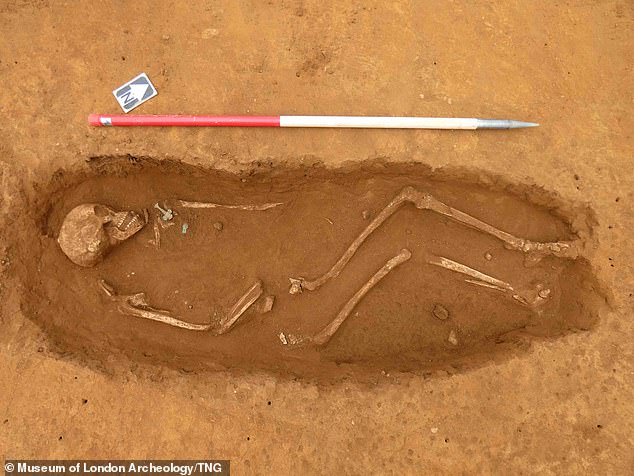
together containing nearly 3,000 treasured objects the buried took to their resting place
‘The Overstone cemetery will allow us to fill a gap in the record for this nation’s region where data was previously limited.’
‘Finding the village and the cemetery together, while not unusual, is unusual. It’s generally one or the other.’
‘We’re blown away by the discoveries at our Overstone site and have loved learning more about what the land was formerly used for,’ said John Dillion, managing director of Barratt and David Wilson Homes South Midlands.
‘Incredibly, humans have been building dwellings on this place for nearly 4,000 years,’ he continued.
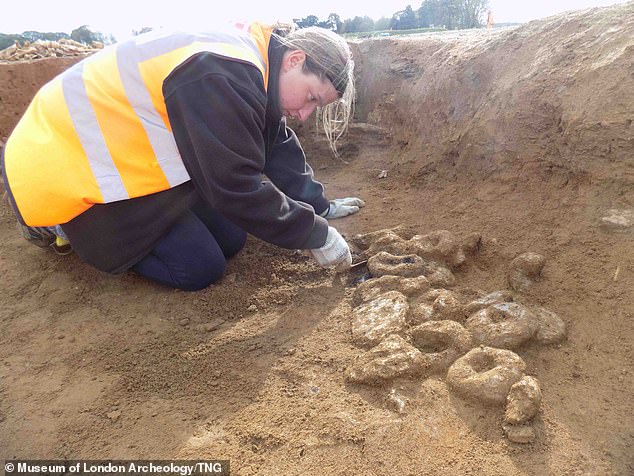
‘With our new and already flourishing community, we intend to carry on this long-standing heritage.’
‘On sites like this, the full impact of developer support for archaeological work is never more obvious,’ said archaeological consultant Simon Mortimer of the RPS Group, the development project’s heritage consultants.
‘These are ‘once-in-a-lifetime findings’ for the archaeologists on the ground, and none of this was known before we arrived.’
‘This is a tremendous gain in understanding two crucial times in Northamptonshire history – the Bronze Age and the Saxon periods — and there is a unique tale to tell that connects people across 3000 years.’

